Imagine a tale so ancient, its origins trace back over 4,000 years, making it the oldest recorded legend known to humanity. This is the story of “The Epic of Gilgamesh.” Journey with us as we delve into the historical background, the captivating synopsis, the profound themes and symbols, the influence and legacy it has left behind, and even its presence in popular culture. Join us as we unlock the secrets of this mythical tale, unearthing its wisdom and timeless relevance. Let the enigma of Gilgamesh captivate your imagination and transport you to a world where gods and mortals collide in a quest for immortality. Brace yourself for an epic adventure that has stood the test of time.
Contents
- Historical Background
- The Epic of Gilgamesh: Synopsis
- Themes and Symbols
- Influence and Legacy
- The Epic of Gilgamesh in Popular Culture
- Conclusion
- Frequently Asked Questions
- References
-
Frequently Asked Questions
- What is the significance of the Epic of Gilgamesh?
- Who wrote the Epic of Gilgamesh?
- What is the main storyline of the Epic of Gilgamesh?
- What are some of the key themes explored in the Epic of Gilgamesh?
- Is the Epic of Gilgamesh based on true events?
- Why is the Epic of Gilgamesh considered the oldest recorded legend?
- What is the significance of the flood myth in the Epic of Gilgamesh?
- How has the Epic of Gilgamesh influenced later literature and legends?
- Are there any adaptations of the Epic of Gilgamesh in modern popular culture?
- What is the archaeological significance of the Epic of Gilgamesh?
- References
- Read More
Historical Background

The Sumerian Civilization
The historical background of “The Epic of Gilgamesh” can be traced back to the Sumerian civilization in ancient Mesopotamia. The Sumerians were one of the earliest civilizations in human history, flourishing between the 4th and 3rd millennium BCE. Considered pioneers in many aspects of civilization, the Sumerians developed writing, systems of mathematics, and advancements in agriculture and architecture. It is within this vibrant civilization that the tale of Gilgamesh originated, recorded on clay tablets using cuneiform script, the earliest known form of writing. The story of Gilgamesh provides valuable insights into the Sumerian culture, beliefs, and their understanding of the world.
Discovery of the Tablets
The tablets containing the tale of Gilgamesh were lost to history for centuries until they were rediscovered in the 19th century. The British archaeologist, Austen Henry Layard, first unearthed fragments of the epic in the ruins of the Library of Ashurbanipal in Nineveh, modern-day Iraq. Later, more tablets and fragments were found during archaeological excavations in other ancient Mesopotamian cities such as Nippur and Ur. These tablets, through their meticulous preservation, have enabled scholars and enthusiasts to piece together the epic and unlock its secrets. The discovery and subsequent translation of the tablets have opened a window into the past, allowing us to explore the rich cultural heritage of the ancient Sumerians and their epic hero, Gilgamesh.
Straddling the realms of history and mythology, “The Epic of Gilgamesh” holds a significant place in human civilization. It invites us to delve into the fascinating historical background of the Sumerian civilization and unravels the stories of gods and mortals woven into its narrative. Through the discovery of these ancient tablets, we are able to reconnect with an ancient era and gain a deeper understanding of the cultural and literary foundations that underpin our modern world.
The Sumerian Civilization
The Sumerian Civilization was a remarkable ancient civilization that thrived in Mesopotamia, known as present-day Iraq, from the 4th to the 3rd millennium BCE. Considered one of the earliest advanced civilizations, the Sumerians made significant contributions to various fields, leaving an indelible mark on human history. Here are some key features of the Sumerian Civilization:
1. Cuneiform Writing: The Sumerians are credited with the invention of cuneiform script, the earliest known form of writing. They used a stylus to make wedge-shaped impressions on clay tablets. This script was initially used for administrative and economic purposes but eventually evolved to encompass literature, myths, and religious texts, including the epic of Gilgamesh.
2. City-States: The Sumerians developed independent city-states, each with its own government, laws, and patron deity. Prominent city-states included Uruk, Ur, Lagash, and Nippur. These city-states were centers of political, economic, and religious activity, showcasing the Sumerians’ administrative and organizational skills.
3. Advanced Agriculture: The Sumerians pioneered advanced agricultural techniques, developing irrigation systems to harness the waters of the Tigris and Euphrates rivers. By cultivating crops such as barley, wheat, and dates, they achieved a surplus of food, enabling the growth of urban centers and specialization of labor.
4. Polytheistic Beliefs: The Sumerians had a complex polytheistic belief system, with a pantheon of gods and goddesses governing various aspects of life. They built elaborate temples called ziggurats, which served as centers of worship and as the physical dwelling places for the deities. The epic of Gilgamesh is set within this rich mythological context.
5. Technological Advancements: The Sumerians were known for their technological innovations. They developed wheeled vehicles, such as chariots, and were skilled metalworkers, crafting intricate jewelry and weapons. Their advancements in pottery, textiles, and tools showcased their creativity and ingenuity.
The Sumerian Civilization laid the foundation for subsequent societies in the region and beyond. Its influence can be seen in various aspects of human civilization, from language and writing systems to law and government. Exploring the Sumerian civilization provides valuable insights into the development of early human societies and the cultural backdrop against which the epic of Gilgamesh emerged. To learn more about the intricate mythology of ancient civilizations, check out our article on the /unraveling-ancient-mythology-ophiuchus/.
Discovery of the Tablets
Discovery of the Tablets
- The British archaeologist Austen Henry Layard discovered fragments of the tablets containing “The Epic of Gilgamesh” in the mid-19th century. These fragments were found in the ruins of the Library of Ashurbanipal in Nineveh, present-day Iraq (link to /tree-of-life-symbolism-in-mythology/).
- Further tablets and fragments were later discovered during excavations in other ancient Mesopotamian cities, including Nippur and Ur.
- With the help of Assyriologists and translators, these scattered fragments were painstakingly pieced together to reconstruct the epic in its entirety.
- The discovery and translation of the tablets unveiled the story of Gilgamesh, allowing scholars to study and analyze its historical and cultural significance.
The discovery of the tablets opened a new chapter in our understanding of ancient civilizations, shedding light on the Sumerian culture, their beliefs, and their literary traditions. It offered a glimpse into a world long gone, providing valuable insights into the way ancient societies perceived their gods, heroes, and the human condition. These tablets serve as a testament to the resilience of ancient texts and the ongoing efforts of archaeologists and historians in unraveling the mysteries of our past.
The Epic of Gilgamesh: Synopsis
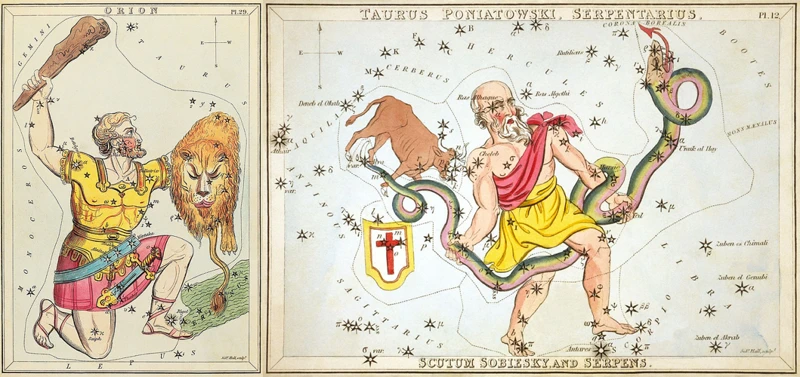
Part 1: The Tyrant King
The Epic of Gilgamesh begins with the introduction of the protagonist, Gilgamesh, the king of Uruk. Presented as a powerful and tyrannical ruler, Gilgamesh is depicted as an oppressive figure who abuses his power and mistreats his subjects. The people of Uruk, overwhelmed by his cruelty, cry out to the gods for help. In response, the gods create Enkidu, a wild and primitive man, to serve as a foil to Gilgamesh. Enkidu, initially living among animals, is eventually introduced to the civilized world by a temple prostitute. The meeting between Gilgamesh and Enkidu marks the beginning of an epic friendship that transforms both of their lives.
Part 2: The Quest for Immortality
The second part of the epic takes us on a grand adventure as Gilgamesh and Enkidu embark on a quest for immortality. Motivated by grief and fear after Enkidu’s death, Gilgamesh becomes obsessed with the idea of defying death and seeks out Utnapishtim, the only human granted immortality by the gods. Utnapishtim, survivor of the Great Flood, shares his story with Gilgamesh, revealing that immortality is reserved for a select few and cannot be obtained by mortal humans. Undeterred, Gilgamesh persists in his search and eventually obtains a plant that grants eternal youth. However, while bathing, a serpent steals the plant, denying Gilgamesh his chance at immortality.
The Epic of Gilgamesh: Synopsis showcases the larger-than-life tale of Gilgamesh and his pursuit of immortality. It highlights the transformation of Gilgamesh from a tyrant king to a mourner seeking eternal life. This epic narrative presents a timeless exploration of human desires, the inevitability of death, and the search for meaning and purpose in life. It is through this synopsis that we gain a glimpse into the multi-faceted themes and profound messages conveyed within the ancient Mesopotamian epic.
Part 1: The Tyrant King
Part 1: The Tyrant King
In the first part of “The Epic of Gilgamesh,” we are introduced to the protagonist, Gilgamesh, the tyrant king of Uruk. Gilgamesh is portrayed as a powerful and arrogant ruler, whose harsh treatment of his subjects sparks discontent among the people. This section highlights Gilgamesh’s oppressive rule and his disregard for the lives of his subjects. It emphasizes the hubris and unchecked power of the king, setting the stage for the transformative journey that awaits him. Despite his strength and might, Gilgamesh is depicted as a flawed character, driven by his own desires and lust for power. This illustrates the universal theme of the clash between mortal aspirations and the limitations of human existence.
As the narrative progresses, we learn about Gilgamesh’s divine origins as the son of the goddess Ninsun and the mortal king Lugalbanda. This divine connection grants Gilgamesh physical strength and exceptional beauty, enhancing his status as a legendary figure. However, his divine lineage does not exempt him from the challenges and struggles faced by ordinary mortals. Gilgamesh’s journey towards self-discovery and redemption unfolds against the backdrop of his tyrannical reign, laying the foundation for the epic adventures that lie ahead.
Throughout this section, the epic introduces the themes of power, mortality, and the consequences of unchecked authority. Gilgamesh’s transformation from a tyrant king to a complex and multifaceted character is a central aspect of the narrative that resonates with readers across time. The exploration of the type of ruler Gilgamesh becomes serves as a cautionary tale, urging individuals in positions of power to consider the impact of their actions on those they govern. In this regard, the epic continues to provide valuable insights into the human condition and the complexities of leadership.
Part 2: The Quest for Immortality
Part 2: The Quest for Immortality
In this section of “The Epic of Gilgamesh,” Gilgamesh, the mighty king of Uruk, finds himself confronted with the bitter reality of mortality. Overwhelmed by grief and fear after the death of his dear friend Enkidu, Gilgamesh embarks on a quest to seek eternal life. Determined to avoid the same fate that befell his companion, Gilgamesh sets off on a perilous journey, crossing mountains, traversing vast deserts, and encountering treacherous mythical creatures along the way.
Throughout his quest, Gilgamesh comes face to face with several divine beings, including the beautiful but elusive goddess Siduri, the keeper of the vineyards. She advises Gilgamesh to embrace the fleeting joys of mortal life rather than obsess over immortality. Undeterred, Gilgamesh continues his search, eventually reaching the waters of immortality guarded by Utnapishtim, the Mesopotamian Noah. Utnapishtim informs Gilgamesh of the great flood that swept the world, similar to the biblical tale of Noah’s Ark.
Utnapishtim challenges Gilgamesh to pass a series of tests, testing his stamina, perseverance, and wisdom. Ultimately, Gilgamesh fails to obtain the coveted eternal life but gains wisdom and a deeper understanding of the fragile nature of human existence. Returning to Uruk, he realizes the importance of leaving a lasting legacy through his accomplishments and the impact he has on future generations.
Part 2 of “The Epic of Gilgamesh” delves into the universal human longing for immortality and the philosophical exploration of our mortality. Gilgamesh’s journey serves as a metaphor for the human condition, grappling with the inevitability of death and the quest for eternal life. Despite his failure to achieve immortality, Gilgamesh’s transformation throughout the quest highlights the importance of embracing the transient nature of life and finding meaning in the legacy we leave behind. The epic forces us to contemplate our own mortality and the eternal quest for answers to the mysteries of life and death.
Themes and Symbols
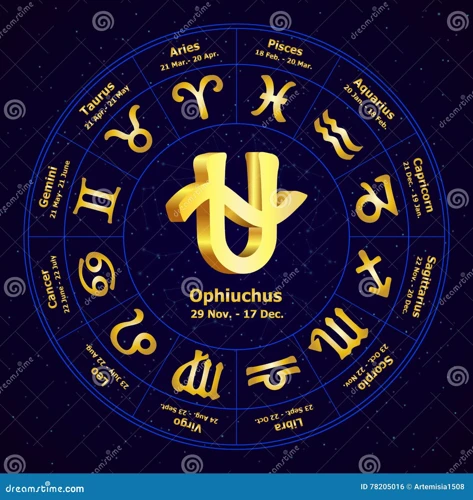
Friendship and Brotherhood
One of the central themes in “The Epic of Gilgamesh” is the exploration of friendship and brotherhood. The bond between Gilgamesh and Enkidu forms the heart of the story. Gilgamesh, a powerful but tyrannical king, is tamed and humanized through his friendship with Enkidu, a wild and untamed man. Their companionship transcends differences in social status and brings out the best in both characters, teaching them empathy, compassion, and the value of genuine connection. Their friendship serves as an example of the transformative power that human relationships can have on individuals, showcasing the importance of camaraderie and support in our own lives.
Mortality and Immortality
Another significant theme in the epic is the exploration of mortality and the search for immortality. Motivated by the death of his beloved friend Enkidu, Gilgamesh becomes obsessed with the idea of eternal life. He embarks on a perilous quest to find Utnapishtim, the man who survived the great flood and was granted immortality by the gods. Through his journey, Gilgamesh confronts his own mortality and grapples with the limitations of human existence. The epic forces us to reflect on the fleeting nature of life and the significance of making the most of our time in this world. It challenges us to contemplate the consequences of an unquenchable desire for immortality and offers insight into the human longing for eternal life.
The Flood Myth
“The Epic of Gilgamesh” also contains a prominent symbol in the form of the Flood myth. Similar to the story of Noah’s Ark in the Bible, the Sumerian epic recounts a great flood that devastates the world, sparing only a select few who are destined to survive. This flood serves as a symbol of divine punishment and cleansing, representing the cyclical nature of life and the forces of destruction and renewal. The Flood myth in Gilgamesh raises questions about the relationship between humans and the gods, as well as the fragility of human achievement in the face of divine power. It serves as a cautionary tale, reminding us of the consequences of hubris and the importance of humility in our pursuit of greatness.
The themes and symbols woven throughout “The Epic of Gilgamesh” continue to resonate with readers today. This epic narrative speaks to timeless aspects of the human experience, exploring universal themes such as friendship, mortality, and the human relationship with the divine. The richness and depth of these themes ensure that Gilgamesh’s story remains relevant and thought-provoking across centuries and cultures. It serves as a testament to the enduring power of storytelling and its ability to explore the complexities of the human condition.
Friendship and Brotherhood
Friendship and Brotherhood
One of the prominent themes explored in “The Epic of Gilgamesh” is the importance of friendship and brotherhood. The epic tells the story of Gilgamesh, the tyrant king of Uruk, and his transformation through his deep bond with Enkidu. Enkidu, initially created by the gods as a wild man to challenge Gilgamesh’s oppressive rule, eventually becomes his closest companion and friend. This unlikely friendship has a profound impact on both characters, as they embark on a series of adventures together. Their bond demonstrates the power of camaraderie and the positive influence it can have on individuals. The unwavering loyalty and support between Gilgamesh and Enkidu highlights the enduring nature of true friendship. This theme resonates across cultures and time periods, reminding us of the value of meaningful connections and the strength we find in the bonds we forge with others. It serves as a poignant reminder of the importance of compassion, empathy, and mutual support in the face of life’s challenges.
The theme of friendship and brotherhood in “The Epic of Gilgamesh” provides us with insights into the social structures and values of the ancient Mesopotamian society. It reflects the emphasis placed on kinship and the bonds formed not only by blood relations but also through shared experiences and mutual trust. In exploring the complexities of friendship through the dynamic relationship between Gilgamesh and Enkidu, the epic sheds light on the human need for connection and companionship, transcending the boundaries of time and culture.
Mortality and Immortality
Mortality and Immortality
One of the central themes in “The Epic of Gilgamesh” revolves around the human fascination with mortality and the quest for immortality. Gilgamesh, as a mortal king, becomes consumed by his fear of death and sets out on a perilous journey to find eternal life. This existential desire resonates with readers across time and cultures as we grapple with our own mortality and yearn for everlasting existence.
The epic explores various avenues through which immortality can be achieved. Gilgamesh first seeks the counsel of Utnapishtim, the survivor of the great flood who was granted immortality by the gods. Utnapishtim reveals that immortality is not easily attainable and is a gift bestowed by the gods upon select individuals. Disheartened by this revelation, Gilgamesh then embarks on a harrowing journey to the ends of the earth, where he encounters the “Plant of Immortality.” However, this opportunity for eternal life is tragically lost when the plant is stolen by a serpent.
The quest for immortality in “The Epic of Gilgamesh” sends a profound message about the nature of human existence. It highlights the inevitability of death and the fleeting nature of life. It emphasizes the importance of cherishing the limited time we have and finding meaning in our mortal existence. The epic prompts us to ponder the question of what it truly means to live a fulfilling life, regardless of our mortality.
The theme of mortality and immortality in “The Epic of Gilgamesh” resonates with other ancient myths and stories that explore similar philosophical questions. It invites readers to reflect on our own mortality and the pursuit of immortality in various cultural and historical contexts. From Greek mythology’s immortal gods to ancient Egyptian beliefs in the afterlife, the human longing for eternal life transcends time and continues to captivate our imaginations.
The Flood Myth
The Flood Myth
- The tale of Gilgamesh includes a prominent aspect known as the Flood Myth. This myth narrates a great flood sent by the gods to destroy humanity. In the epic, the gods are angered by the noise and corruption of humans, leading them to decide on a cataclysmic flood as divine punishment.
- Gilgamesh’s journey intertwines with this flood, as he receives a warning from the god Ea and is advised to build a massive boat to save himself and his people. He follows Ea’s instructions meticulously, building the boat and taking various animals on board.
- The flood itself lasts for several days and nights, causing widespread destruction and death. However, Gilgamesh and his people survive the deluge, and afterward, he offers sacrifices to the gods to show gratitude for their survival.
- This flood myth has striking similarities to other flood myths found in various ancient cultures around the world. The parallels between the Gilgamesh flood and the story of Noah in the Hebrew Bible are particularly notable.
The significance of the flood myth within “The Epic of Gilgamesh” lies in its portrayal of humanity’s vulnerability and the frailty of human existence. It serves as a reminder that even the mightiest of heroes, like Gilgamesh, are subject to the uncontrollable forces of nature and the wrath of the gods. The myth raises profound questions about the relationship between humans and the divine, the consequences of human actions, and the potential for redemption. It is a testament to the enduring power of storytelling and the universal themes that resonate through time and across cultures.
Influence and Legacy
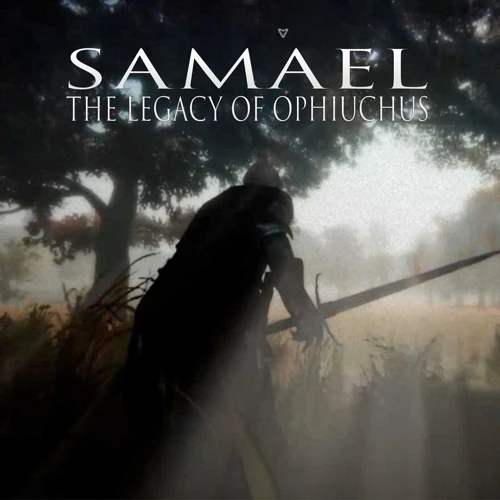
Inspiration for Later Legends and Literature
- “The Epic of Gilgamesh” has served as a wellspring of inspiration for later legends and literature across various cultures. In ancient Babylon, the story influenced the myth of the hero Marduk, who battled against Tiamat, the chaotic sea serpent. The epic’s themes of heroism, friendship, and the quest for immortality resonate throughout many ancient Near Eastern and Mediterranean myths.
- Elements of the story can also be seen in Greek mythology, with parallels between Gilgamesh and figures such as Heracles and Achilles. These heroes share similar characteristics of strength, courage, and flawed humanity.
- The epic’s enduring legacy can be found in the biblical story of Noah and the flood. Similar to the flood myth in “The Epic of Gilgamesh,” the biblical account carries themes of divine punishment and redemption, demonstrating the diffusion of ancient stories and motifs across different cultures and time periods.
Archaeological and Historical Significance
- Besides its influence on mythology and literature, “The Epic of Gilgamesh” holds immense archaeological and historical significance.
- Excavations in Mesopotamia have revealed artifacts that corroborate details mentioned in the epic, providing valuable insights into the ancient Sumerian civilization and its cultural practices.
- The story sheds light on the role of kingship and the relationship between rulers and their subjects in ancient Mesopotamia.
By uncovering these remnants of the past, the epic provides historians and archaeologists with a deeper understanding of the cultural, social, and political dynamics of the Sumerian civilization. It stands as a testament to the enduring impact of storytelling and the ways in which ancient literature continues to shape our collective consciousness.
Inspiration for Later Legends and Literature
Inspiration for Later Legends and Literature
– The epic tale of Gilgamesh has served as a wellspring of inspiration for later legends and literature throughout history. Its themes of heroism, friendship, and the search for immortality have resonated with storytellers across cultures.
– In ancient Greece, the story of Gilgamesh, particularly the flood narrative, is believed to have influenced the epic poem, the “Iliad,” written by Homer. The hero Achilles shares similarities with Gilgamesh in terms of his strength and mortality. The concepts of hubris and the wrath of the gods, prominent in Greek mythology, can also be traced back to the Sumerian epic.
– The influence of Gilgamesh extended to biblical literature as well. The flood story parallels the account of Noah’s Ark in the Book of Genesis in the Bible, suggesting a possible connection between ancient Mesopotamian and Hebrew traditions.
– In the realm of modern literature, the influence of Gilgamesh can be seen in works such as John Milton’s “Paradise Lost,” which draws upon the epic’s themes of temptation, hubris, and the fall of man.
– More recently, acclaimed writer Neil Gaiman drew inspiration from Gilgamesh for his novel “American Gods,” incorporating elements of ancient Mesopotamian mythology into his narrative.
– The enduring power of Gilgamesh as a literary work can also be seen in the writings of renowned Irish author James Joyce. His novel “Ulysses” contains parallels to the epic, with its exploration of a hero’s journey and the themes of mortality and transcendence.
– The legacy of Gilgamesh stretches beyond literature into the realm of music, with composers such as Benjamin Britten and Philip Glass drawing inspiration from the epic in their musical compositions.
The influence of “The Epic of Gilgamesh” on later legends and literature is a testament to the richness and enduring relevance of this ancient tale. Its universal themes and motifs continue to captivate readers and artists alike, weaving a thread across centuries and civilizations. It serves as a reminder of the profound impact that ancient myths and legends can have on shaping our collective storytelling consciousness, transcending time and space.
Archaeological and Historical Significance
Archaeological and Historical Significance
1. Preservation of Ancient Mesopotamian Culture: The discovery and translation of the tablets containing “The Epic of Gilgamesh” have provided invaluable insights into the ancient Mesopotamian culture. These texts shed light on the beliefs, customs, and societal structure of the Sumerians, providing a glimpse into their religious practices and worldview.
2. Influence on Literature and Mythology: The Epic of Gilgamesh is not only the oldest recorded legend but also one of the earliest surviving works of literature in human history. Its influence on subsequent literature and mythology is profound. The themes and motifs explored in the epic can be observed in later works such as the Babylonian Enuma Elish and even in biblical stories like Noah’s Ark.
3. Evolution of Writing Systems: The cuneiform script used to write the epic is one of the earliest known forms of writing. The decipherment and translation of the tablets played a crucial role in unraveling the mysteries of this ancient script and contributed to the broader understanding of writing systems in human history.
4. Historical Context: The epic offers insights into the historical context of the time in which it was composed. It portrays the conflicts and alliances between ancient city-states, provides glimpses of social hierarchies, and offers a glimpse into the lives of ordinary people in ancient Mesopotamia.
5. Connection to Other Cultures: The story of Gilgamesh demonstrates the interconnectedness of ancient civilizations. Similar tales and legends can be found in neighboring cultures such as the Hittites and the Hurrians.
6. Artistic Depictions: The depiction of characters and scenes from the epic on various artworks, such as cylinder seals and stone reliefs, provides visual documentation of the story and enhances our understanding of the cultural significance of the epic.
The archaeological and historical significance of “The Epic of Gilgamesh” cannot be overstated. It not only provides a window into the past but also highlights the universal themes and narratives that continue to resonate with audiences today. Through the exploration of these ancient texts, we gain a deeper appreciation for the cultural heritage of humanity as a whole.
The Epic of Gilgamesh in Popular Culture
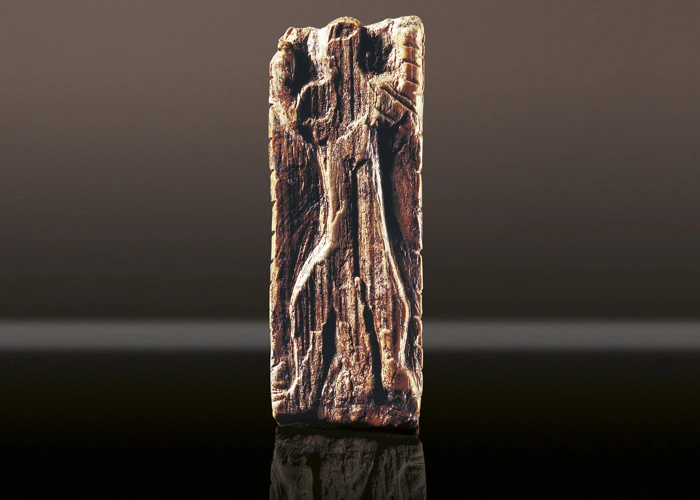
Adaptations in Film and Television
“The Epic of Gilgamesh” has left an indelible mark on popular culture through its numerous adaptations in film and television. Filmmakers and storytellers have been captivated by the epic’s timeless themes and larger-than-life characters. One notable adaptation is the 1923 silent film “The Loves of Ishtar,” which was inspired by elements of Gilgamesh’s story. Other adaptations include the 1987 animated film “The Last Quest of Gilgamesh” and the 2004 animated feature “In the Beginning: From Creation to Noah’s Ark,” which weaves elements of Gilgamesh’s tale into the larger narrative of biblical stories. These adaptations have helped introduce the epic to new audiences and keep its ancient story alive in modern entertainment.
References in Modern Literature and Art
Beyond film and television, “The Epic of Gilgamesh” has also inspired numerous references in modern literature and art. Contemporary authors have drawn upon the themes and characters of the epic to create their own works of fiction. Kazuo Ishiguro’s novel “The Buried Giant” incorporates elements of Gilgamesh’s quest for immortality into a medieval British setting. In the art world, artists have been inspired by Gilgamesh’s mythical journey and have depicted scenes from the epic in various mediums. These modern interpretations pay homage to the enduring legacy of the epic and its continued resonance in the creative arts.
The Epic of Gilgamesh continues to capture the imagination of people across different mediums of popular culture. Whether it’s on the big screen or in the pages of contemporary literature, Gilgamesh’s story has found a way to remain relevant and influential. Its presence in popular culture speaks to the universal appeal and enduring power of this ancient legend. Through adaptations and artistic interpretations, Gilgamesh’s tale continues to inspire and fascinate audiences, ensuring that its legacy lives on for generations to come.
Adaptations in Film and Television
Adaptations in Film and Television
- 1968: “The Epic of Gilgamesh” was brought to life in a 1968 film by director Peter Greenaway. The film fuses live-action and animation to portray the legendary hero’s quest for immortality. Greenaway’s adaptation captures the essence of the ancient tale while introducing modern visual techniques to enhance the storytelling.
- 2003: An animated television series titled “Gilgamesh” premiered in Japan. This series reimagines the epic, blending elements of science fiction and fantasy. It follows two siblings who are drawn into a mysterious world based on the mythology of Gilgamesh.
- 2014: Acclaimed director Ridley Scott announced his plans to develop a feature film based on Gilgamesh. The project aimed to explore the mythological and historical aspects of the epic, showcasing the enduring power of the story on the big screen.
These adaptations in film and television demonstrate the timeless appeal of “The Epic of Gilgamesh” and its ability to inspire contemporary storytelling. Each adaptation brings a unique interpretation of the epic, introducing it to new audiences and further solidifying its place in popular culture. Whether through animation, live-action, or a fusion of genres, these adaptations keep the spirit of Gilgamesh alive and ensure that his legendary journey continues to resonate with viewers worldwide.
References in Modern Literature and Art
References in Modern Literature and Art
“The Epic of Gilgamesh” has left an indelible mark on modern literature and art, inspiring numerous works that pay homage to its timeless themes and epic storytelling. Countless authors, poets, and playwrights have drawn inspiration from Gilgamesh’s quest for immortality and the profound lessons embedded within the tale. The influence of the epic can be seen in the works of renowned writers such as John Gardner, whose novel “Grendel” explores the complexity of the monster from the Beowulf legend, and David Mitchell, whose novel “Cloud Atlas” weaves together multiple narratives across time. Additionally, the story of Gilgamesh has permeated visual art, with artists like Odilon Redon, Pablo Picasso, and Sidney Nolan creating artworks based on its mythological characters and themes. The endurance of “The Epic of Gilgamesh” in modern literature and art showcases its universal appeal and its ability to resonate with audiences across different cultures and time periods. Its influence continues to inspire new creations that delve into the depths of human existence and the search for meaning.
Conclusion
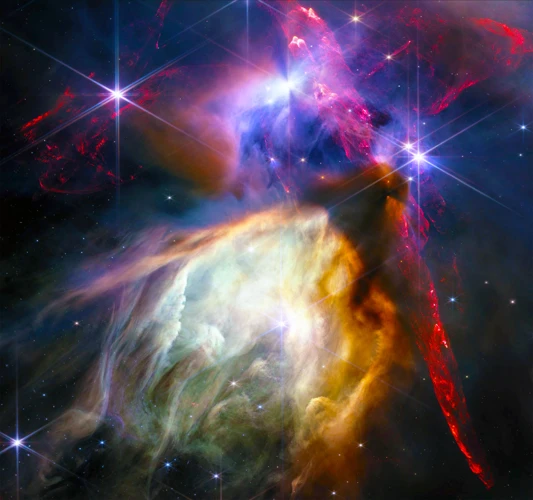
In conclusion, “The Epic of Gilgamesh” stands as a testament to the enduring power of storytelling. This ancient legend, the oldest recorded in human history, continues to captivate and inspire readers across the globe. Through its historical background, we have gained valuable insights into the Sumerian civilization, their beliefs, and their understanding of the world. The discovery of the tablets, after centuries of being lost to history, has allowed us to rediscover this extraordinary epic and appreciate its cultural and literary significance. The themes and symbols explored in Gilgamesh, such as friendship, mortality, and the flood myth, resonate with readers even today, reminding us of our shared humanity and the universal pursuit for meaning and immortality. Moreover, this epic has had a profound influence on subsequent legends, literature, and even popular culture, testifying to its enduring legacy. From adaptations in films and television to references in modern literature and art, Gilgamesh continues to shape and inspire artistic expression. As we reflect on the legacy of “The Epic of Gilgamesh,” we are reminded of the power of ancient myths and legends to transcend time and connect us to our collective past, unlocking a deeper understanding of our own human nature.
Whether you approach “The Epic of Gilgamesh” as a historical artifact, a literary masterpiece, or simply as an enchanting tale, one thing is certain: this ancient legend has left an indelible mark on the tapestry of human civilization. So, delve into its pages, immerse yourself in the world of Gilgamesh, and let this epic take you on a profound journey through time, leaving you with a deeper appreciation for the stories that have shaped our history and continue to resonate with us today.
Frequently Asked Questions
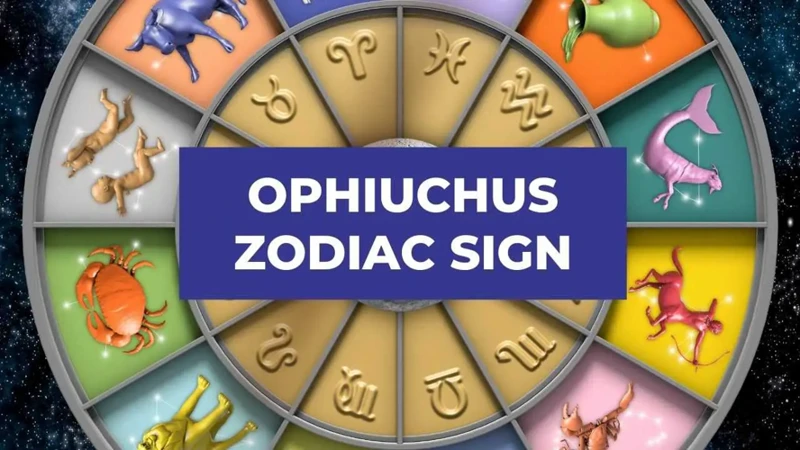
FAQs About “The Epic of Gilgamesh”
1. What is “The Epic of Gilgamesh”?
“The Epic of Gilgamesh” is an ancient Sumerian poem considered the oldest recorded legend in human history. It tells the story of Gilgamesh, a legendary king, and his search for immortality.
2. When was “The Epic of Gilgamesh” written?
“The Epic of Gilgamesh” was written around 2100 BCE during the Sumerian civilization in Mesopotamia.
3. How was “The Epic of Gilgamesh” preserved over thousands of years?
The story of Gilgamesh was passed down orally through generations before it was finally recorded on clay tablets using cuneiform script. These tablets were then discovered and excavated by archaeologists in the 19th century.
4. What are the main themes in “The Epic of Gilgamesh”?
“The Epic of Gilgamesh” explores themes of friendship and brotherhood, mortality and immortality, and the power of nature. It also includes the ancient flood myth, which bears resemblance to the story of Noah’s Ark in the Bible.
5. What is the significance of Gilgamesh as a hero?
Gilgamesh is portrayed as a heroic figure who undergoes a moral and spiritual journey throughout the epic. He represents the human desire for power, immortality, and the quest for knowledge and wisdom.
6. Are there any historical references in “The Epic of Gilgamesh”?
Yes, the epic contains references to historical cities, kings, and events that provide valuable insights into the political and cultural landscape of ancient Mesopotamia.
7. Has “The Epic of Gilgamesh” influenced other literary works?
Yes, the epic has had a significant influence on later legends and literature, including the flood story in the Bible’s Book of Genesis and the hero’s journey archetype found in numerous mythologies and literary works.
8. Are there any adaptations of “The Epic of Gilgamesh” in popular culture?
Yes, the epic has been adapted into various forms of media including films, television shows, and graphic novels. These adaptations strive to capture the epic’s timeless themes and captivating narrative.
9. What is the archaeological significance of “The Epic of Gilgamesh”?
The discovery and preservation of the tablets containing the epic have provided valuable archaeological insights into the Sumerian civilization, their culture, and their literary achievements.
10. Can “The Epic of Gilgamesh” still be relevant to modern readers?
Absolutely. Despite its ancient origins, the epic explores universal themes and questions about human existence, mortality, and the pursuit of meaning and purpose. Its timeless relevance continues to captivate and inspire readers today.
References
- What is the oldest story passed down by humans?
- The Epic of Gilgamesh
- Was the Epic of Gilgamesh, the oldest texts, actually …
Frequently Asked Questions

What is the significance of the Epic of Gilgamesh?
The Epic of Gilgamesh is considered one of the most important literary works in human history. It provides valuable insights into the ancient Mesopotamian culture, beliefs, and worldview.
Who wrote the Epic of Gilgamesh?
The Epic of Gilgamesh was written by anonymous authors in ancient Mesopotamia, around 2100 BCE. It is believed to have been composed in various versions over several centuries.
What is the main storyline of the Epic of Gilgamesh?
The main storyline revolves around Gilgamesh, the king of Uruk, and his quest for immortality. Along the way, he encounters various challenges and learns important life lessons.
What are some of the key themes explored in the Epic of Gilgamesh?
Some of the key themes explored in the epic include friendship and brotherhood, mortality and immortality, and the power of nature.
Is the Epic of Gilgamesh based on true events?
While the epic contains elements of historical events and figures, it is primarily a work of mythology and legend. It draws inspiration from Mesopotamian history and folklore.
Why is the Epic of Gilgamesh considered the oldest recorded legend?
The Epic of Gilgamesh is considered the oldest recorded legend because it predates other well-known ancient texts such as the Iliad and the Odyssey by several centuries.
What is the significance of the flood myth in the Epic of Gilgamesh?
The flood myth in the Epic of Gilgamesh is seen as a precursor to the similar flood story found in the biblical book of Genesis. It highlights the theme of divine punishment and rebirth.
How has the Epic of Gilgamesh influenced later literature and legends?
The epic has had a profound influence on later literature and legends, inspiring works such as the biblical story of Noah and the flood, as well as aspects of Greek mythology.
Are there any adaptations of the Epic of Gilgamesh in modern popular culture?
Yes, the Epic of Gilgamesh has been adapted into various films, television shows, and even video games. It continues to captivate audiences with its timeless themes and characters.
What is the archaeological significance of the Epic of Gilgamesh?
The discovery of the tablets containing the Epic of Gilgamesh provided archaeologists and historians with valuable insights into ancient Mesopotamian society, including their beliefs, customs, and literature.






